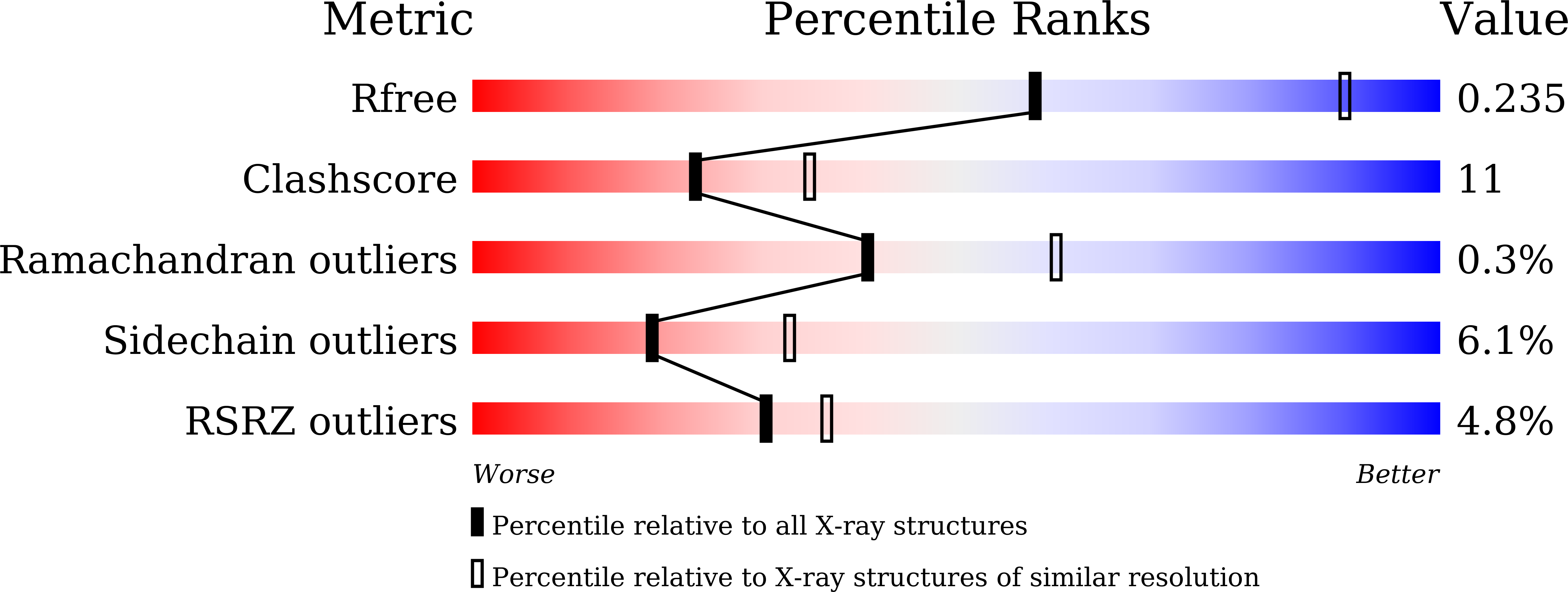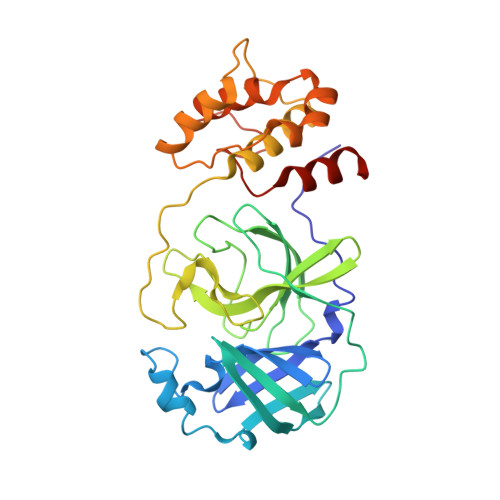A Structural Comparison of SARS-CoV-2 Main Protease and Animal Coronaviral Main Protease Reveals Species-Specific Ligand Binding and Dimerization Mechanism.
Ho, C.Y., Yu, J.X., Wang, Y.C., Lin, Y.C., Chiu, Y.F., Gao, J.Y., Lai, S.J., Chen, M.J., Huang, W.C., Tien, N., Chen, Y.(2022) Int J Mol Sci 23
- PubMed: 35628479
- DOI: https://doi.org/10.3390/ijms23105669
- Primary Citation of Related Structures:
7XJW - PubMed Abstract:
Animal coronaviruses (CoVs) have been identified to be the origin of Severe Acute Respiratory Syndrome (SARS)-CoV, Middle East respiratory syndrome (MERS)-CoV, and probably SARS-CoV-2 that cause severe to fatal diseases in humans. Variations of zoonotic coronaviruses pose potential threats to global human beings. To overcome this problem, we focused on the main protease (M pro ), which is an evolutionary conserved viral protein among different coronaviruses. The broad-spectrum anti-coronaviral drug, GC376, was repurposed to target canine coronavirus (CCoV), which causes gastrointestinal infections in dogs. We found that GC376 can efficiently block the protease activity of CCoV M pro and can thermodynamically stabilize its folding. The structure of CCoV M pro in complex with GC376 was subsequently determined at 2.75 ?. GC376 reacts with the catalytic residue C144 of CCoV M pro and forms an (R)- or (S)-configuration of hemithioacetal. A structural comparison of CCoV M pro and other animal CoV M pro s with SARS-CoV-2 M pro revealed three important structural determinants in a substrate-binding pocket that dictate entry and release of substrates. As compared with the conserved A141 of the S1 site and P188 of the S4 site in animal coronaviral M pro s, SARS-CoV-2 M pro contains N142 and Q189 at equivalent positions which are considered to be more catalytically compatible. Furthermore, the conserved loop with residues 46-49 in animal coronaviral M pro s has been replaced by a stable ¦Á-helix in SARS-CoV-2 M pro . In addition, the species-specific dimerization interface also influences the catalytic efficiency of CoV M pro s. Conclusively, the structural information of this study provides mechanistic insights into the ligand binding and dimerization of CoV M pro s among different species.
Organizational Affiliation:
Department of Biomedical Imaging and Radiological Science, China Medical University, Taichung 404, Taiwan.

















